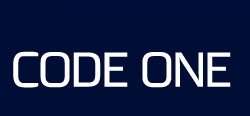PRATT TO STUDY SOYUZ DATA IN DESIGNING JAST NOZZLE
MICHAEL A. DORNHEIM/LOS ANGELES
The Soyuz Aero Engine Co. will provide vectoring nozzle information for the Lockheed Martin Joint Advanced Strike Technology (JAST) aircraft design under a technical assistance agreement it signed with Pratt & Whitney.
Soyuz is the second Russian company to join the short takeoff/vertical landing (STOVL) aspect of Lockheed Martin's JAST concept. Yakovlev recently received Russian government approval to provide data, and last week Lockheed Martin asked Yakovlev to proceed (AW&STJune 19, p. 74).
Yakovlev’s Yak-141 short takeoff/vertical landing demonstrator is the only aircraft that approximates Lockheed Martin's JAST configuration (AW&ST Sept. 14, 1992, p. 23). Its weight also is close to that projected for JAST. The Russian company has long experience with the concept from its Yak-38 operational STOVL fighter, and Lockheed Martin wants to examine its design methodology.
Soyuz makes the Yak-141’s main R- 79V turbofan engine and its downward vectoring nozzle.
”WE WANT TO DEVELOP a working relationship to see if we can work together in the future,” David F. Palmer, Lockheed Martin Tactical Aircraft Systems’ JAST deputy program manager, said. Pratt & Whitney wants to learn about Soyuz’s three-bearing circular nozzle. Two of the bearings connect angled cuts in the exhaust duct, and the third is at a straight cut. Rotating the bearings in synchronization deflects the exhaust down while cancelling unwanted yaw components.
The nozzle can be used with the heat of partial afterburner, an impressive accomplishment unmatched by a flightworthy Western nozzle with extreme vectoring capability.
Pratt & Whitney is designing a three-bearing circular nozzle for the Lockheed Martin JAST, but will also have Soyuz design a nozzle. The Russian company could also be involved with fabrication, either through Pratt & Whitney or directly with Lockheed Martin.
Lockheed Martin’s 86% scale wind tunnel model is currently equipped with a Rolls-Royce rectangular vectoring nozzle. Design trade studies are still being conducted, Paul M. Bevilaqua, Lockheed Martin Skunk Works advanced STOVL deputy program manager, said. ”First principles say the round nozzle is lighter, but other features have to be considered,” he said. A rectangular nozzle is more suited to stealth design.
Lockheed Martin JAST is a ”two plus two post” design with about 80% of the vertical thrust coming from the engine’s aft nozzle and front shaft-driven fan, and the remainder from wing root nozzles using engine fan air (AW&ST May 8, p.24). The Yak-141 has a similar configuration and two small, vertically aligned engines that serve a function similar to the JAST lift fan.
The Yak-141 has an empty weight of about 24,000 lb., and JAST’s would be similar. Landing weight will usually be about 4,000 to 5,000 lb. heavier. The
Harrier weighs 15,000 to 16,000 lb. empty.
Palmer said Lockheed Martin's technical assistance agreement with Yakovlev covers two areas:
- Data from the Yak-141 and Yak-38 on ground effects, such as damage to various landing surfaces, ingestion of foreign objects and recirculated exhaust, erosion damage, aerodynamic ”suckdown” effects and acoustic loads. Both roll-on and vertical landing data will be examined.
- Analysis by Yakovlev of a generic JAST configuration to gain insight into the company's design methods and an independent check of Lockheed Martin’s results.
”Yakovlev has sophisticated software for predicting ground effects,” Palmer said.
”We want them to predict a ground footprint from our design. It will complement our outdoor, 86% scale tests at NASA Ames.”
Lockheed Martin also is
interested in information on Zvezda ejection seats used by Yakovlev that automatically fire when a crash is imminent. ”We’ve examined them for a year and are convinced they’re good,” Palmer said. There is also interest in how the lift fan inlet aft of the cockpit may affect ejection seat trajectory.
Lockheed Martin may also ask Yakovlev to design a control system for JAST, Bevilaqua said. He, Palmer and a Pratt & Whitney official visited Yakovlev in May. ”Yakovlev has done an impressive job of controlling the three-engine Yak-l 41 in a hover, and we’re interested in learning about their control architecture,” Bevilaqua said.
The
first data from Yakovlev are expected around the end of November, and all data are to be delivered around the end of January, Palmer said. The study contract is worth less than $500,000 to Yakovlev. The data are timed to support proposals for a JAST demonstrator, which Palmer expects will be due around April.
Lockheed Martin also has considered having Yakovlev build parts, ”but that’s to be determined,” Bevilaqua said. Lockheed Martin and Pratt & Whitney
are still awaiting US State Dept. approval to have two-way discussions with Yakovlev and Soyuz. But a one-way flow of information from Yakovlev should be acceptable without State Dept. approval, Palmer said.
SEVERAL MONTHS AGO
Lockheed Martin considered installing the JAST propulsion system in the Yak—141 demonstrator as an economical testbed if Congress severely cuts program funds, but this is not currently a serious option. ”It’s not in our plan,” Bevilaqua said. ”It’s fallback position C.”
”The JAST program has no intention of pursuing that sort of strategy,” a senior Pentagon official said. ”That must be something internal to Lockheed Martin.”
”The purpose of building an aircraft is to show that the requirements of the four JAST services can be met, and the Yak-141 can’t do that,” Palmer said.


